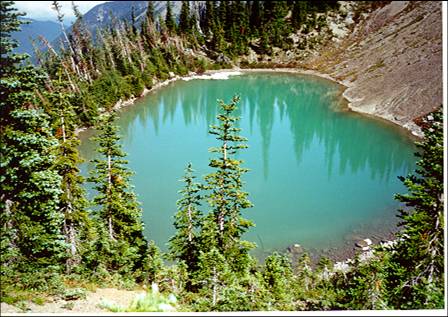Estimated ultraviolet radiation doses in wetlands in six national parks
Abstract/Summary
Ultraviolet-B radiation (UV-B, 280 nm to 320 nm wavelengths) doses were estimated for 1024 wetlands in six National Parks; Acadia (Acadia), Glacier (Glacier), Great Smoky Mountains (Smoky), Olympic (Olympic), Rocky Mountain (Rocky), and Sequoia/Kings Canyon (Sequoia/Kings). Estimates were made using ground-based UV-B data (Brewer spectrophotometers), solar radiation models, GIS tools, field characterization of vegetative features, and quantification of DOC concentration and spectral absorbance. UV-B dose estimates were made for the summer solstice, at a depth of 1 cm in each wetland. Mean dose across all wetlands and parks was 19.3 Whr*m-2 (range of 3.4 to 32.1 Whr*m-2). Mean dose was lowest in Acadia (13.7 Whr*m-2) and highest in Rocky (24.4 Whr*m-2). Doses were significantly different among all parks. These wetland doses correspond to UV-B flux of 125.0 W*cm-2 (range of 21.4 to 194.7 W*cm-2) based on a day length, averaged among all parks, of 15.5 hr. Dissolved organic carbon (DOC), a key determinant of subsurface UV-B flux, ranged from 0.6 (analytical detection limit) to 36.7 mg carbon * l-1 over all wetlands and parks, and reduced potential maximal UV-B doses at 1 cm depth by 1 to 87 %. DOC concentration, as well as its effect on dose, was lowest in Sequoia/Kings, and highest in Acadia (DOC was equivalent in Acadia, Glacier, and Rocky). Landscape reduction of potential maximal UV-B doses ranged from zero to 77 %, and was lowest in Sequoia/Kings. These regional differences in UV-B wetland dose illustrate the importance of considering all aspects of exposure in evaluating the potential impact of UV-B on aquatic organisms.
Publication details
| Published Date: | 2005-07-31 |
| Outlet/Publisher: | Ecosystems 8: 462–477 |
| Media Format: |
ARMI Organizational Units:
Pacific Northwest - BiologyRocky Mountains, Northern - Biology
Topics:
WaterPlace Names:
Pacific NorthwestWestern US

